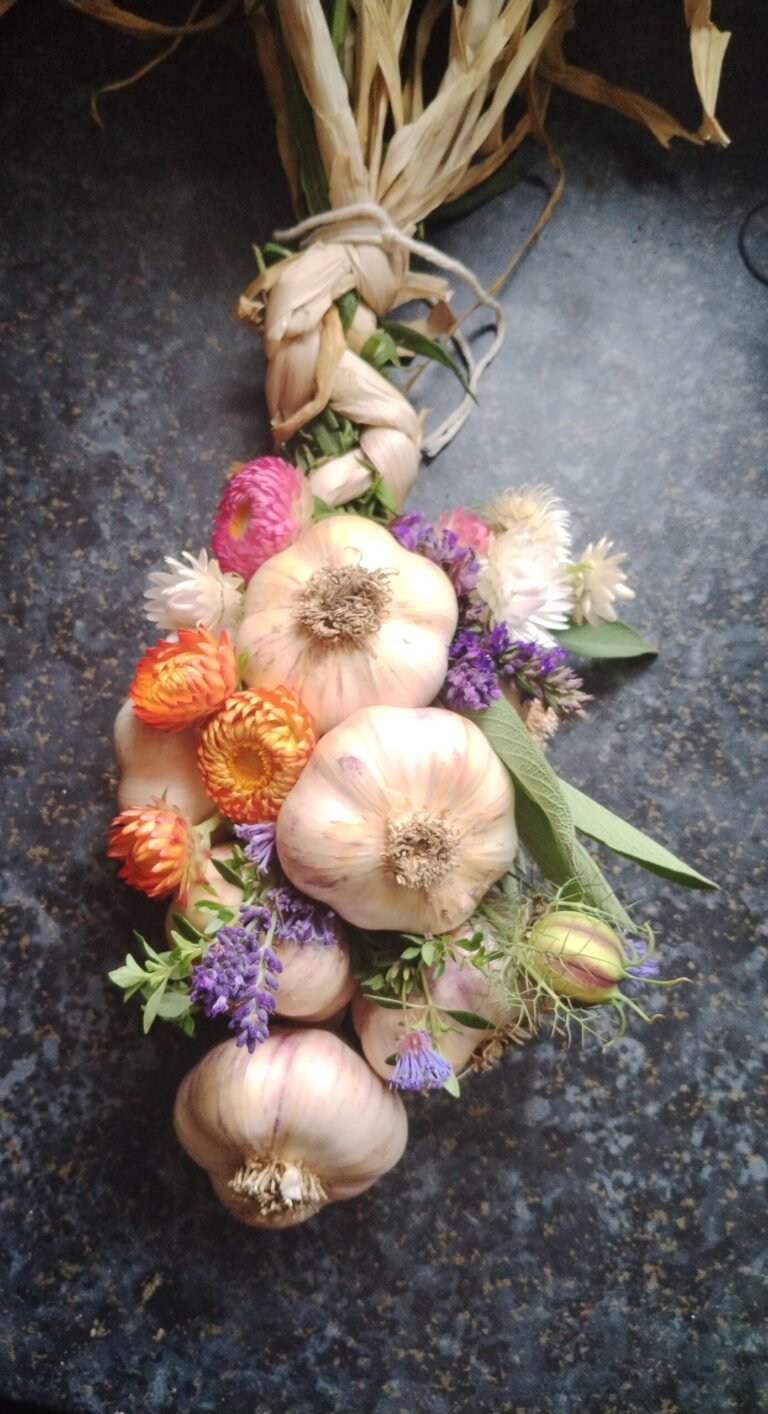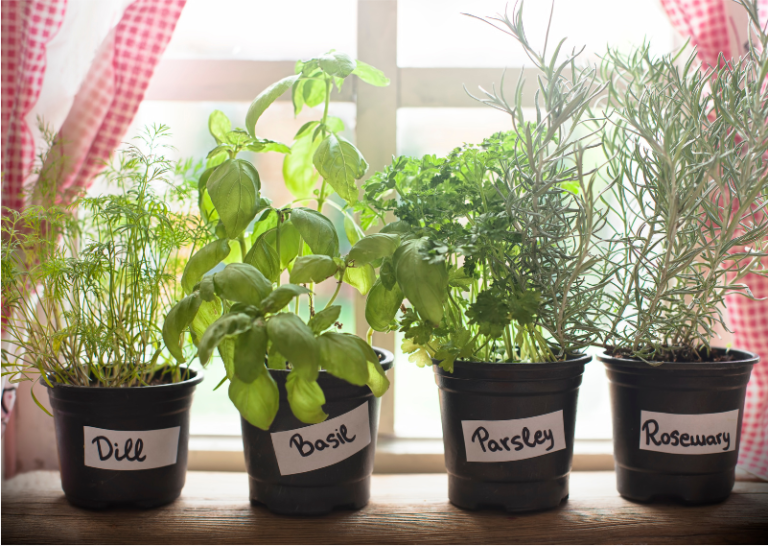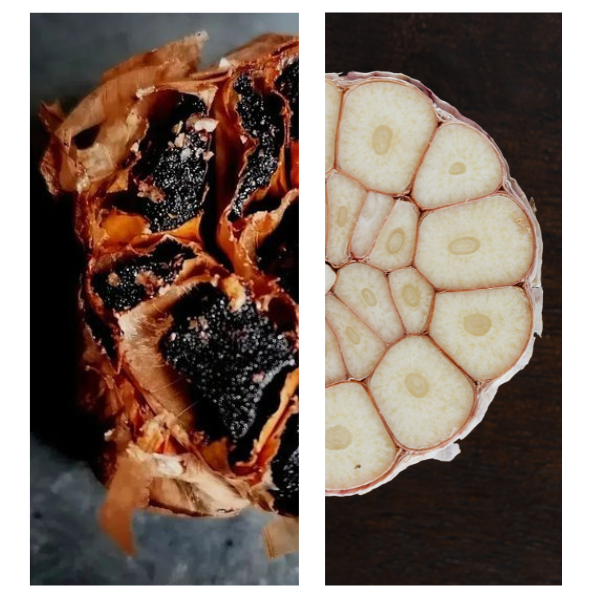Growing organic strawberries isn’t just about fresh, homegrown fruit—it’s about reviving that childhood magic of picking sun-ripened berries, still warm from the vine. There was nothing quite like my Nan’s garden in summer. Hidden among the rows of vegetables and wildflowers were the real treasures—strawberries. As a child, I’d tiptoe through the garden, eyes scanning the leaves for those tiny bursts of ruby-red sweetness. Some were still blushing green, not quite ready, but when I found one perfectly ripe, warm from the sun, and bursting with juice? Pure magic. It wasn’t just the taste—it was the adventure, the quiet thrill of hunting for nature’s candy.
But here’s the thing: strawberries, as innocent as they seem, are one of the most pesticide-laden fruits you can buy. They sit high on the Dirty Dozen list, meaning conventional strawberries are often coated in a cocktail of chemicals you’d never willingly sprinkle over your breakfast. Their thin skin and delicate flesh make them particularly vulnerable—whatever goes on them stays in them. That’s why growing organic strawberries isn’t just a wholesome garden project; it’s a way to reclaim that childhood magic without the hidden toxins.
The good news? Growing them organically isn’t difficult, and the rewards are endless—juicier fruit, richer flavor, and the peace of knowing exactly what’s in (and on) your food. Whether you have a garden, a balcony, or just a few pots, you can cultivate your own little patch of strawberry heaven. Ready to get started? Let’s dig in!
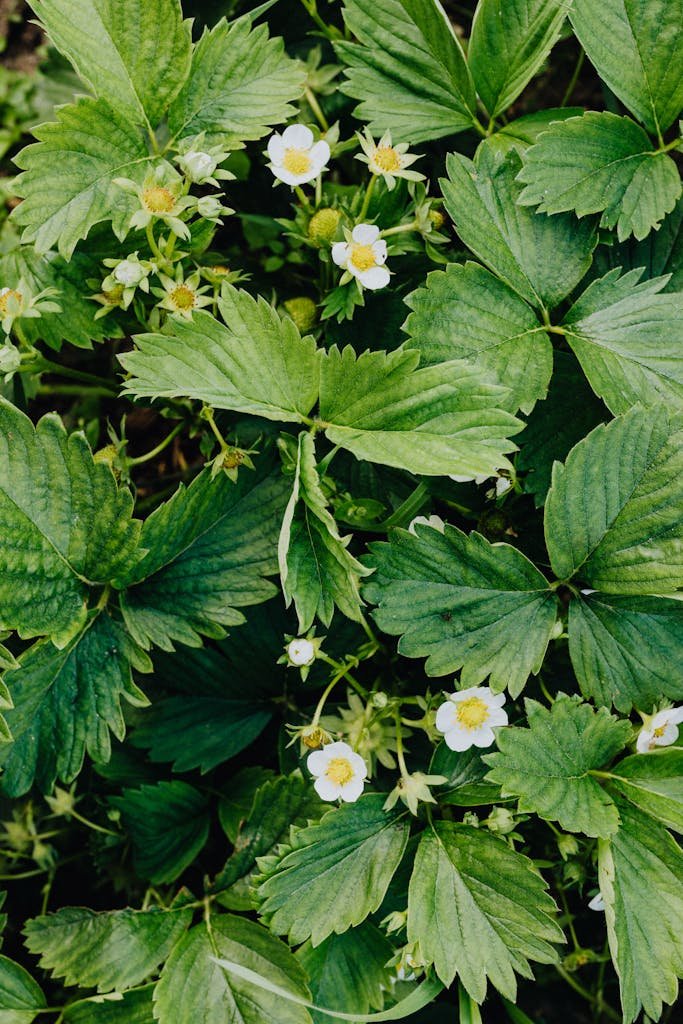

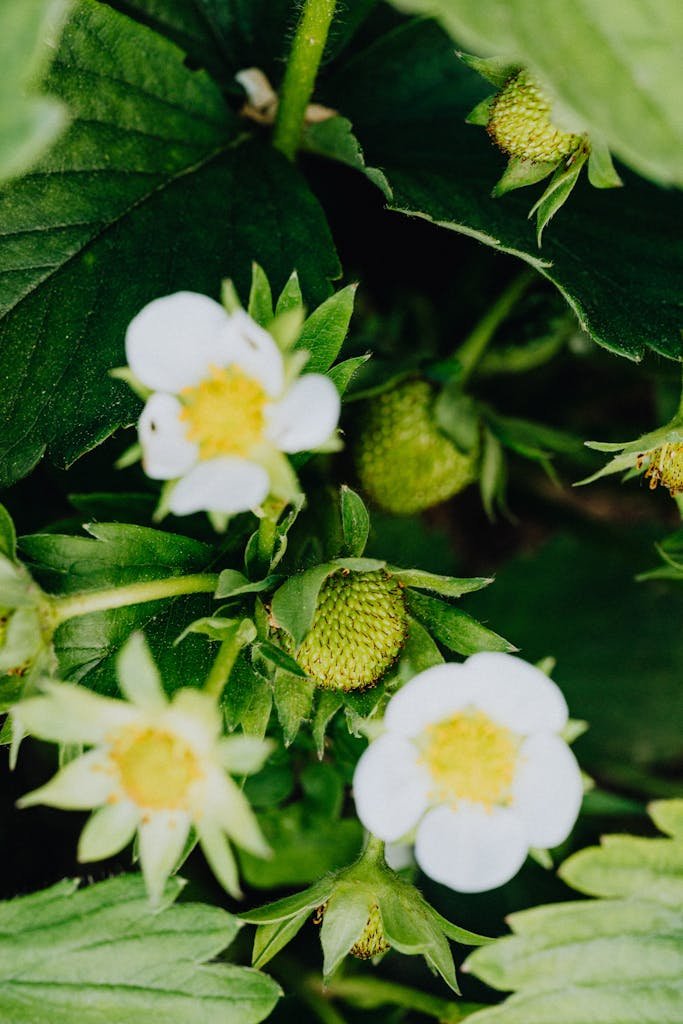
Some of the links in this post are affiliate links, including links to products on Amazon. This means if you click and make a purchase, I may earn a small commission at no extra cost to you. I only recommend items I genuinely love and believe could add value to your life. Thank you for supporting this blog—it helps keep the content free and full of ideas just for you!
Getting Started: What You Need to Grow Organic Strawberries
Strawberries are wonderfully adaptable little things—you can grow them in garden beds, containers, or even hanging baskets, making them perfect for any space, big or small. But before you start dreaming of sun-warmed berries straight off the vine, let’s talk about what you’ll need to set up your organic strawberry patch.
Choosing Your Strawberry Growing Method
The beauty of strawberries? They thrive just about anywhere. If you have a garden bed, you can plant them in neat rows, letting them spread naturally over time. If space is tight, containers work beautifully—just make sure they have good drainage. And for those short on ground space, hanging baskets are a charming option, keeping berries off the soil and away from pests. (Looking for durable, stylish planters? Check out these strawberry grow bags and hanging baskets that make life easier.)
Best Strawberry Varieties for Beginners
Some strawberry varieties demand a lot of pampering, but if you want foolproof, beginner-friendly options, look for disease-resistant and easy-to-grow types. ‘Albion’ and ‘Seascape’ are fantastic for consistent harvests, while ‘Honeoye’ and ‘Mara des Bois’ bring that nostalgic, old-fashioned strawberry flavor.
How Much Space Do You Need?
If you’re growing in the ground, plan for at least 12 inches between plants, with rows about 2 feet apart. Containers? A 12-inch pot can house one or two plants comfortably. Hanging baskets? Keep it to one plant per basket to avoid overcrowding. (A sturdy, breathable fabric grow bag works wonders for container-grown strawberries!)
By choosing the right setup and variety, you’ll set yourself up for a season of sweet, homegrown success. And trust me—once you taste the difference, you’ll never go back to store-bought!
Step 1 – Preparing the Soil for Organic Strawberries
If strawberries had a secret to growing plump, juicy, and packed with flavor, it would be soil. Get the soil right, and you’ll have berries so sweet and luscious that even the birds will be plotting ways to steal them. Let’s make sure you give your organic strawberries the best possible start.
Best Soil Type and pH for Strawberries
Strawberries love well-draining, loamy soil—nothing too heavy or soggy, or you’ll end up with sad, struggling plants. The ideal pH is between 5.5 and 6.5, slightly on the acidic side. (Not sure what your soil pH is? A simple soil test kit can tell you in minutes!) If your soil is too alkaline, mix in peat moss or pine needles to lower the pH naturally.
DIY Organic Soil Mix for Healthy Growth
For container or raised bed growers, whipping up your own organic strawberry mix is easy:
- 1 part compost (adds nutrients and improves texture)
- 1 part coco coir or peat moss (helps retain moisture)
- 1 part perlite or sand (ensures proper drainage)
- A sprinkle of organic slow-release fertilizer (this organic berry fertilizer is a great choice!)
Mix it well, and you’ll have the perfect strawberry-growing foundation—light, airy, and packed with nutrients.
Why Compost and Mulch Are Your Best Friends
Compost feeds your plants over time, keeping them strong and disease-resistant. A layer of mulch—straw, pine needles, or even shredded leaves—locks in moisture, suppresses weeds, and prevents dirt from splashing onto your fruit.
Taking the time to prepare your soil now means fewer problems and sweeter rewards later. And once you taste your first homegrown berry, you’ll know—it was absolutely worth it. 🍓
Step 2 – Planting Your Strawberry Plants the Right Way
Now that your soil is prepped and ready, it’s time for the exciting part—getting those strawberry plants in the ground! Whether you’re planting in garden beds, containers, or hanging baskets, proper planting technique is key to a bountiful harvest.
When and Where to Plant for the Best Results
Strawberries are sun-lovers, needing at least 6–8 hours of direct sunlight daily. Choose a warm, sheltered spot to encourage strong growth and sweeter berries.
- Best time to plant? Early spring (as soon as the soil is workable) or late summer for a fall planting. If you’re in a warmer climate, fall planting gives you a head start for spring!
- Spacing matters! Keep plants 12–18 inches apart to allow airflow and prevent disease. Rows should be spaced 2–3 feet apart to make harvesting easier.
How to Plant Bare-Root vs. Potted Strawberry Plants
🍓 Bare-Root Plants: These are dormant plants that need a little TLC before planting.
- Soak roots in water for an hour before planting.
- Dig a hole deep enough to spread the roots out.
- Position the crown (where leaves meet the roots) right at soil level. Too deep, and it rots; too shallow, and it dries out.
🌱 Potted Plants: These are ready to go straight into the soil.
- Gently remove the plant from its pot and loosen the roots.
- Dig a hole just deep enough for the root ball.
- Firm the soil around the base and water well.
Common Beginner Mistakes (And How to Avoid Them!)
🚫 Planting too deep or too shallow – Remember, the crown should sit right at soil level.
🚫 Overcrowding your plants – Strawberries spread, so give them room to breathe!
🚫 Skipping mulch – Mulch keeps moisture in and dirt off your berries.
🚫 Forgetting to water – Young strawberry plants need consistent moisture (but don’t drown them). A soaker hose or drip irrigation system is a game-changer for keeping soil evenly moist.
Once your strawberries are planted, the real fun begins—watching them grow! 🍓 Up next? Caring for your plants so they thrive.
Step 3 – Watering & Feeding Your Strawberries Naturally
Your strawberries are in the ground, looking all perky and full of promise—but now comes the real work! Consistent watering and feeding are key to plump, juicy berries bursting with flavor. Let’s talk about keeping them hydrated and well-fed, without a single drop of synthetic fertilizer.
How Much Water Do Strawberries Need? (Beginner’s Watering Schedule)
Strawberries have shallow roots, meaning they dry out quickly. Here’s how to keep them perfectly hydrated:
💧 Newly planted strawberries: Water daily for the first two weeks to help them establish strong roots.
💧 Mature plants: About 1–1.5 inches (2.5–4 cm) of water per week, adjusting for rainfall.
💧 Hot weather? Increase to 2 inches per week and mulch to lock in moisture.
🚫 Avoid overhead watering—wet leaves invite disease! Instead, use a soaker hose or drip irrigation system (like this one!) to water at the base of the plant.
Best Organic Fertilizers for Healthy Growth
Forget synthetic fertilizers—your strawberries thrive on natural nutrients! Here are three organic fertilizers to boost their growth:
🌿 Compost: The ultimate slow-release food! Mix in well-rotted compost when planting and top-dress every month.
🐛 Worm Castings: Packed with microbes that boost plant health and improve soil structure. Sprinkle a handful around the base of each plant (get organic worm castings here!).
🍌 Banana Peel Tea: A potassium-rich liquid feed that helps with flowering and fruit production.
DIY Organic Strawberry Plant Food (With Fast-Available Calcium)
Ingredients:
- 2 cups compost tea (or diluted worm castings tea)
- 1 tablespoon molasses (for microbial activity)
- 1 banana peel (potassium boost)
- 1 tablespoon eggshell calcium extract (see below)
- ½ teaspoon Epsom salt (magnesium for healthy fruiting)
- Water to dilute
How to Make Water-Soluble Calcium (Eggshell Extract):
- Crush eggshells (about 6-8 shells).
- Add to a glass jar and cover with apple cider vinegar or white vinegar (1:2 ratio).
- Let it fizz! The reaction extracts calcium in a plant-available form.
- After 3-7 days, strain the liquid and store in a glass jar.
- Use 1 tablespoon per gallon (3.8L) of water in your plant feed.
Instructions for Plant Feed:
- Blend banana peel with a small amount of water.
- Mix all ingredients in a large watering can or bucket.
- Dilute with water (enough to make about 1 gallon of liquid feed).
- Water your strawberries at the base every 2-3 weeks for stronger plants and sweeter berries!
This version ensures that your strawberries get an immediate calcium boost, along with essential nutrients for lush growth and juicy berries!
Step 4 – Natural Pest & Disease Prevention (No Pesticides Needed!)
Growing organic strawberries means keeping pests and diseases at bay—without reaching for harmful chemicals. Luckily, nature has plenty of built-in defenses, and with a little planning, you can outsmart the bugs and fungal issues before they start.
The Most Common Strawberry Pests (and How to Stop Them Organically)
- Slugs & Snails: These slimy thieves love ripe strawberries. Try crushed eggshells, diatomaceous earth, or beer traps to keep them away.
- Aphids: These sap-suckers can weaken your plants. Introduce ladybugs, plant marigolds, or use a mild soapy water spray.
- Spider Mites: Dry, dusty conditions attract these pests. A simple spray of neem oil every two weeks keeps them under control.
- Birds & Squirrels: They’ll steal your strawberries before you do! Use netting or plant sacrificial berries elsewhere in the garden.
Beginner-Friendly Natural Pest Control
- Companion Planting: Basil, chives, and nasturtiums naturally repel pests and improve strawberry flavor.
- Neem Oil Spray: A must-have for organic growers—safe for plants, deadly for pests.
- Diatomaceous Earth: A sprinkle around your plants creates a barrier against soft-bodied insects like slugs and ants.
Organic Disease Prevention
- Crop Rotation: Never plant strawberries in the same spot two years in a row—this prevents soil-borne diseases.
- Proper Airflow: Space plants 12-18 inches apart to avoid fungal problems like powdery mildew.
- DIY Baking Soda Spray: Mix 1 teaspoon baking soda + 1 quart (1L) water + a few drops of liquid soap to prevent fungal infections.
With a few simple tricks, you can keep your strawberry patch thriving—naturally!
Step 5 – Caring for Your Strawberry Plants Through the Seasons
Growing strawberries isn’t just about planting and harvesting—it’s a year-round relationship. From the first signs of spring to tucking them in for winter, here’s how to keep your berry patch happy in every season.
🌱 Spring: Waking Up Your Strawberries After Winter
Spring is when the garden stretches, yawns, and shakes off the cold. Your strawberries will be no different. Once the last frost has passed, clear away old leaves and mulch to let fresh air and sunshine in. Check for any winter damage and snip away dead runners.
Now’s the time for a gentle feeding—a boost of compost tea or diluted fish emulsion will wake them up nicely. If you’re growing strawberries in containers, consider repotting with fresh soil to keep them thriving.
☀️ Summer: Protecting Berries from Heat & Pests
Ah, summer—the season of juicy red berries, sticky fingers, and garden raids from cheeky birds. Your strawberries will need consistent watering (about 1 inch per week), but be sure to water at the base to prevent fungal issues.
To stop berries from baking in the heat, add a thick layer of straw mulch around the plants—it keeps the soil cool and protects your precious fruit. As for the birds? A simple netting system or even some shiny aluminum foil strips can help keep them from swiping your berries before you do.
🍂 Fall: Prepping Plants for Winter Dormancy
As the days shorten and the air gets crisp, your strawberry plants slow down. This is the time to remove dead leaves, trim runners, and give them a final dose of compost or worm castings to strengthen the roots before winter.
For those in colder zones, a layer of straw or pine needles acts as a warm blanket against frost. If you’re growing in pots, consider moving them to a sheltered spot like a garage or greenhouse for extra protection.
❄️ Winter: Can You Grow Strawberries Indoors?
If you can’t bear the thought of a berry-less winter, why not grow some indoors? Alpine strawberries are perfect for a sunny windowsill, rewarding you with tiny, fragrant berries all year round.
For dormant outdoor plants, check on them after heavy snow or frost. A little patience, and before you know it, spring will be back—and so will those first sweet, homegrown strawberries.
Step 6 – When & How to Harvest Your Organic Strawberries
There’s nothing quite like the thrill of plucking a sun-warmed, ruby-red strawberry straight from the plant—especially if you grew it yourself. But if you want the sweetest berries and a long-lasting harvest, there’s a right way (and a wrong way) to do it.
How to Tell When Strawberries Are Ripe
Unlike some fruits, strawberries don’t continue to ripen after picking. Once off the vine, that’s it—what you see is what you get. Look for berries that are:
✅ Deep red all over – No green or white patches.
✅ Plump and firm – Not mushy or underripe.
✅ Fragrant – Ripe strawberries smell as sweet as they taste!
If in doubt, give them another day or two—better to wait than to pick too soon.
The Best Way to Pick Without Damaging Plants
It’s tempting to grab and yank, but resist the urge! Strawberry plants are delicate, and rough handling can snap stems or even pull out whole plants.
✔️ Use scissors or pinch the stem about ½ inch above the berry.
✔️ Avoid squeezing the fruit—it bruises easily.
✔️ Harvest in the cool morning hours for the freshest berries.
Frequent picking encourages more fruit production, so don’t leave overripe berries on the plant.
Storing & Preserving Your Organic Berries
Fresh strawberries are best eaten within 2-3 days, but if you have an abundant harvest, here’s how to keep them:
- Short-term storage: Keep unwashed berries in a single layer in the fridge (lined with a paper towel).
- Freezing: Hull, wash, and freeze on a baking sheet before transferring to a freezer bag.
- Drying: Slice thinly and use a dehydrator for chewy, concentrated sweetness.
- Jam-making: The best way to preserve that summer flavor—check out this organic strawberry jam recipe!
No matter how you enjoy them, homegrown organic strawberries will always beat store-bought ones. So pick, savor, and start dreaming of next year’s harvest!
Conclusion: Your First Organic Strawberry Harvest Awaits!
There’s something undeniably magical about growing your own strawberries. Maybe it’s the way they burst with sun-ripened sweetness, a flavor that no store-bought berry could ever match. Or maybe it’s the sheer joy of watching little hands eagerly hunt through green leaves, faces lighting up when they find a perfectly ripe treasure. If you’ve ever watched a child discover a strawberry patch, you know—it’s pure, sticky-fingered bliss.
But beyond the nostalgia and simple pleasures, growing organic strawberries is a game-changer for your health. Remember, strawberries sit high on the Dirty Dozen list, meaning store-bought ones are often loaded with pesticides. By growing your own, you’re taking control—no chemicals, no mystery residues, just clean, delicious fruit straight from your garden to your plate.
And the best part? You don’t need a sprawling garden to make it happen. A small patch, a raised bed, or even a few hanging baskets on the balcony can yield more berries than you’d think. With a little care, a bit of patience, and maybe a few enthusiastic little helpers, you’ll have a bounty of organic strawberries season after season.
So whether you’re in it for the flavor, the health benefits, or just the sheer joy of growing your own food, one thing’s for sure—once you taste a sun-warmed, homegrown strawberry, there’s no going back.


